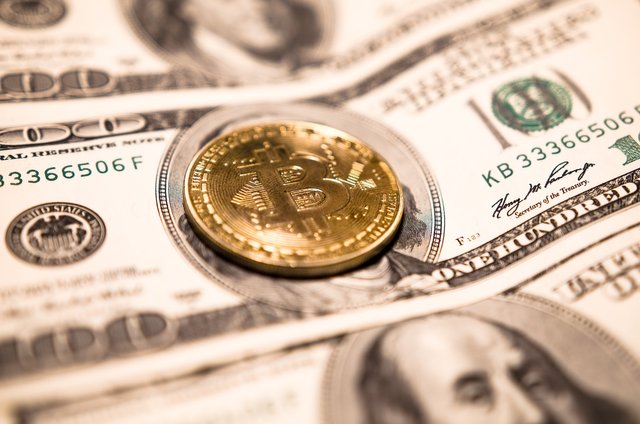
In our current day and age, we are so used to the way money looks and the way which we are able to use it that it’s hard to believe that it was ever any different. But it was. Money actually has a very murky, and diverse, history, and it is in an era of transformation once again.
Bartering
Back in the cave man times, and prior to around 700 BCE, Money didn’t really exist. In these times, people acquired the goods which they needed through a simple system of bartering. For example, if someone hunted a deer, he would then try to trade part of that deer for the tools he needed to hunt more deer. While this system worked for thousands of years, it didn’t allow for true innovation as it was very time consuming. The individual who killed the deer would not only have to find someone who had the products he needed, but that individual would also have to need or want to trade him for deer meat. And as you could imagine this could be a very lengthy process depending on the product you needed.
Sometime before the use of precious metals, this system of free-for-all bartering changed to a system of using spices, salt, or pelts as a method of exchange. This is one of the first examples of actual money, as all money represents is a record of stored value. Under this system, the man who killed the deer would trade part of it for a popular spice, and then trade that popular spice for the tools he needed. Sometime in here, precious metals also came into the mix, and people would trade goods for certain weights of precious metals such as gold or silver. The issue with this system, is it became very difficult to carry around the proper amount of spices or gold with which to make your purchase. And for large purchases, it would probably take you multiple trips (and multiple bags of spices!) This system continued to be used in much of the world until 770 BCE.
The Chinese
During this same time period, the Chinese were bartering in a very similar manner, using mostly weapons and precious metals as a sort of currency. Then someone had the idea to make small bronze miniatures of the weapons to later be traded. While this was a decent idea, carrying around mini versions of a spear or spade in your pocket could be quite prickly. And thus in 770 BCE they started trading goods for small bronze circles instead. And these small bronze circles are recognized as the first coins ever invented.
These coins were not popular for very long though, and around 700 BCE, the Chinese emperor switched his empire to a system of paper money. There were likely growing pains as the dynasties learned the best way to print, issue, and value money, but by the time Marco Polo visited they had a handle on the paper money system and had been using it for years.
The First Official Currency
Although the Chinese technically invented the first coins, as well as paper money, because it took so long for them to be connected to the western world (and to have an established system in place), credit for the first form of currency is actually accredited to Lydia in 600 BCE. Lydia was a kingdom in what is now known as Western Turkey and was, at the time, ruled by King Alyattes. This King decided that carrying around large amounts of precious metals and spices was too cumbersome, and instead he began minting coins which were a mix of gold and silver. He then stamped these coins with a picture of an animal which established its value or denomination.
This invention changed the western world as most countries across Europe quickly adapted the use of a coin system as money. And strangely enough, this system stayed in place until the late 16th century (even though other countries had moved on to paper) merely because a number of European countries were carrying out enough expeditions resulting in enough precious metals to continue minting the coins.
When colonialists first settled in the new world, they too used the coin system known to them from their European roots. However, when times became tough and weeks stretched to months between shipments, the coins ran out, and colonialists were forced to write paper IOU’s for purchases. This led to the rise of the paper cash based monetary system in the USA.
From Paper Money to Plastic Money
The system of paper money was based on the ideal of a centralized bank holding the specified amount of gold represented on the paper which they gave to you to effectively spend. However, this was a bit risky because cash didn’t have your name on it, and if it was taken, someone else would have the note to access your supply of gold. This is why, in 1947, banks began printing devices known as credit cards. These nifty cards, made of plastic, would allow a shopper to go into a shop, purchase items, and pay their bank later, without having to worry about carrying enough cash on them or knowing exactly what they would purchase. At first, it was only credit cards which were issued—cards which operated sort of like an IOU where the shopper would pay later. But by 1970 (just as the US left the gold standard) banks were issuing debit cards which allowed companies to take money directly from a shoppers checking account.
This concept took off like wildfire, and over the course of the next 50 years, almost every single person in the USA would have at least one card in their wallet if not more. But innovation didn’t stop there, as cards became safe, more widely accepted, and even easier to use, they also became entangled in the digital world.
Digital Money
In 2008, in response to the rise of the internet, Visa created a digital payment system, which allows its card users to send money to other people just using their phone. While this was revolutionary, and convenient at the time, it was nothing compared to what came next.
The year 2009 saw the first major change to money since its invention with the creation of a digital currency known as Bitcoin. This currency, unlike all those which came before it, didn’t require a government to establish or oversee its value. In fact, Bitcoin’s value was wholly decided on by the laws of supply and demand which put the power of money back in the hands of the people. And this is somewhere the power hasn’t been since the age-old days of bartering. This of course have angered governments everywhere, as they’ve become used to (and powerful by) controlling their country’s money supply. Thus, many of them began to release propaganda to try and convince their citizens to stay away from these sorts of currencies (granted, some of them are scams).
But regardless of how the governments feel, digital money is on the rise. And although it isn’t widely accepted currently, this doesn’t mean it won’t be in the future. Just think, the first guy to suggest trading an entire deer pelt for a small bronze coin was probably laughed out of town, and just look where society is now.
This article was brought to you by the provably fair Bitcoin Dice Game available on MintDice. Originally posted on MintDice.com.


If you like history, check out our history of gambling article as well!
Downvoting a post can decrease pending rewards and make it less visible. Common reasons:
Submit
True story, nothing to add...
Downvoting a post can decrease pending rewards and make it less visible. Common reasons:
Submit